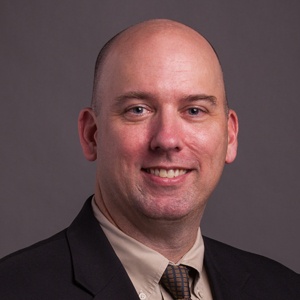GENERATOR CATEGORIES
The RCRA includes three categories of generators historically labeled conditionally exempt small quantity generators (CESQGs), small quantity generators (SQGs) and large quantity generators (LQGs). As part of the revised rule, the EPA has replaced the name conditionally exempt small quantity generator (CESQG) with very small quantity generator (VSQG). All regulations previously applicable to a CESQG now apply to a VSQG.
The amount of waste generated during a calendar month determines which category each generator falls under. Under the revised rule, a generator must consider the combination of acute hazardous waste, non-acute hazardous waste, and residues from the cleanup of a spill of acute hazardous waste generated in a calendar month. Some of the key, more stringent provisions of the rule, which states will be required to adopt, include:
HAZARDOUS WASTE CONTAINER LABELING: The new rule requires SQGs, LQGs and transfer facilities to better define the risks of hazardous wastes accumulated in tanks, containers, drip pads and containment buildings at central accumulation areas (CAAs) (a newly defined term in the rule that refers to the areas subject to accumulation time limits set forth in sections 40 CFR 262.16 and 262.17), as well as satellite accumulation areas (SAAs). This will require such generators to mark containers with the words “hazardous waste” and an indication of the hazards of the contents of the container, including, but not limited to, the applicable hazardous waste characteristic(s) such as ignitable, corrosive, reactive, as well as hazard labels consistent with certain U.S. Department of Transportation (DOT) requirements, a hazard statement or pictogram consistent with the Occupational Safety and Health Administration (OSHA) hazard communication standard, or a chemical label consistent with National Fire Protection Agency (NFPA) code 704.
LARGE QUANTITY GENERATOR FACILITY CLOSURE REQUIREMENTS: LQGs must notify the EPA or the authorized state at least 30 days prior to closing their facility and 90 days after closing the facility. If needed to obtain a clean closure of a facility, LQGs may request additional time; however, the request must be made within 75 days after closing the facility and an explanation must be provided as to why the additional time is needed.
PERIODIC NOTIFICATION REQUIREMENTS FOR SQGS: Requiring SQGs to re-notify the EPA to update site information. Currently, SQGs only have to provide a one-time notification to the EPA to obtain an EPA identification number (to treat, store, dispose of or transport hazardous waste), whereas LQGs are required to re-notify more often in connection with biennial reporting. Under the rule revisions, SQGs must re-notify every four years.
CONTINGENCY PLANS AND PERSONNEL TRAINING: In order to give first responders quick access to key information in the event of an emergency, new LQGs (or LQGs amending their contingency plans) are now required to submit a quick reference guide to local emergency responders along with their contingency plans. The new rule also allows generators to use computer-based and electronic training options to complete the personnel training requirements instead of or in addition to classroom instruction and on-the-job training.
Some of the less stringent provisions of the rule, which states are not required to adopt, include:
VSQG CONSOLIDATION PROVISION: Allows VSQGs to voluntarily send hazardous waste to LQGs under the control of the same company to be consolidated before the waste is sent to a TSDF.
EPISODIC EVENT ALLOWANCE: Allows VSQGs and SQGs to maintain their existing regulatory status if they have an episodic event that generates additional amounts of hazardous waste which would have resulted in them moving into a higher generator category for a short period of time, as long as they comply with specified conditions.
LOCAL WAIVER OF THE 50-FOOT PROPERTY LINE BUFFER: The new regulation allows an LQG to apply for a site-specific waiver from the authority with jurisdiction over the fire code if the LQG is unable to meet the 50-foot property line condition.
Due to numerous opposing public comments, the EPA chose not to finalize certain provisions it proposed in 2015. These include documentation of non-hazardous waste determinations, maintaining hazardous waste determinations until the facility closes, notification to the state or EPA of closure of a waste accumulation unit at a facility, requiring labeling hazardous waste units with the contents of the container, certain revisions to the drip pad requirements and documentation of weekly inspections.
